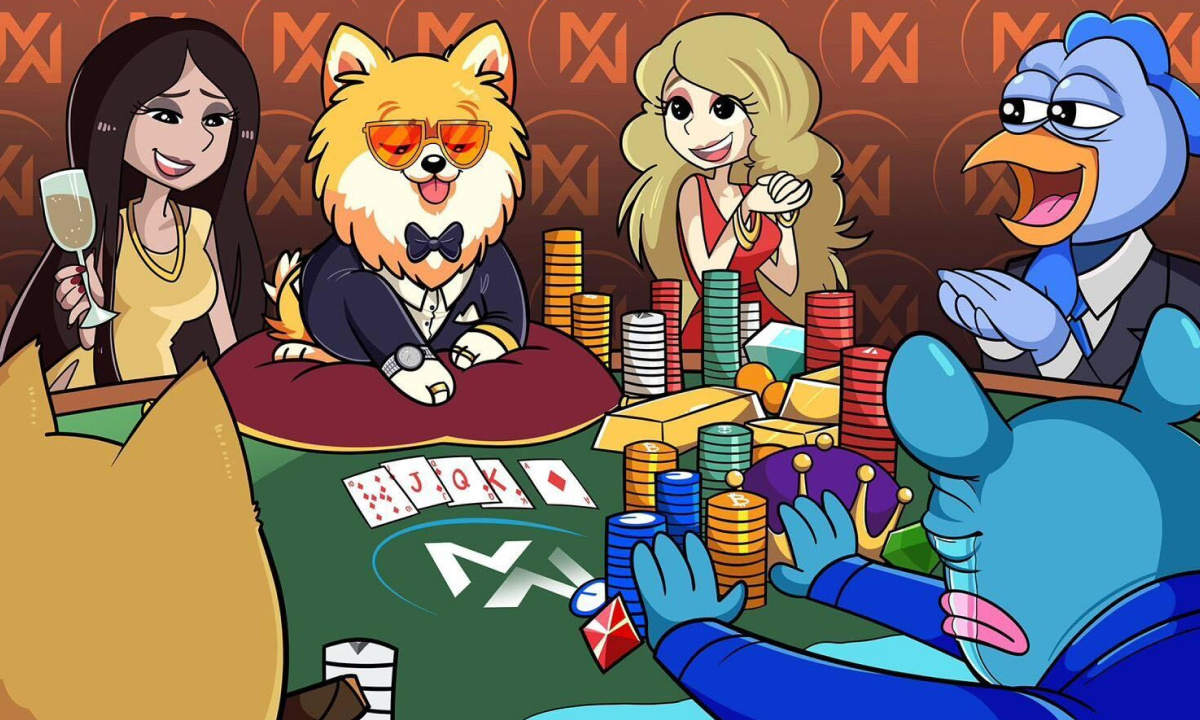What is JPEG’d (JPEG)? The first lending project for NFT
JPEG’d is a protocol built on Ethereum that allows NFT holders to use their NFT as collateral to borrow money. Find out with CoinCu through the article below!

What is JPEG’d?
JPEG’d is a decentralized lending protocol on the Ethereum blockchain that enables non-fungible token (NFT) holders to open collateralized debt positions (CDPs) using their NFTs as collateral. Users mint PUSd – the native stablecoin of the protocol – enabling them to effectively obtain leverage on their NFTs.
JPEG’d is completely permissionless, decentralized, and is not controlled by any central entity. JPEG’s aim is to bridge the gap between DeFi and NFTs and eventually allow any NFT collections, voted by governance, to obtain a line of credit using their NFTs as collateral on the protocol.
Outstanding Features
What is the unique selling point?
The highlight of Jpeg’d lies in developing its own mechanism to work in the field of Lending: Non-fungible Debt Position (NFDP).
Collateral asset
Certain NFT collections will be supported by Collateral JPEG’d. Initially, the project supported Crypto Punk collateral, but it was eventually expanded to include EtherRock and Bored Ape Yatch Club. Further collections will be proposed and approved by governance (by JPEG token holders).
The NFT’s worth will be defined by the Floor price, but unique NFTs of value may be priced individually in specific situations (through the administration).
Fee
Fees on JPEG’d are divided into two categories:
The annual interest rate on the loan is 2%.
Fee for disbursing a loan: 0.5 percent of the amount disbursed. For example, if Ken mortgages NFT, borrows 10,000 PUSD, and withdraws the entire money, he will be charged a 0.5 percent withdrawal fee or 50 PUSD.
LTV (Loan to Value Ratio)
To ensure the protocol works properly, JPEG’d sets the LTV for loans, which is understood as the ratio between the loan and the collateral value.
Currently, JPEG’d allows users to borrow up to 32% of the collateral value, the loan position will be liquidated if LTV Ratios > 33%.
In addition, JPEG’d also has a maximum loan disbursement limit for certain NFT collections. For example, with Crypto Punk, the loan limit is 10M PUSD. If this threshold is reached, users will not be able to borrow more. This limit increase/decrease can be changed through protocol administration.

Insurance
JPEG’d offers customers to pick insurance coverage for their loans as a highly volatile asset lending protocol.
Users can buy insurance for any of their borrowing positions, specifically. The user then has the option to “redeem” his NFT from the DAO after repaying the debt and paying the insurance premium if the DAO is liquidated (calculated by 25 percent of the outstanding debt value at the time of payment). liquidation (including principal and interest accrued). The insurance premium will be 1% of the amount disbursed.

JPEG Locking mechanism
The determination of the value of NFTs is mainly based on the voting of protocol governance. Specifically, the user can make a recommendation to increase the value of a given NFT. When the proposal is approved, the user will have to lock the JPEG to a value equal to 25% of the maximum loan amount calculated according to the proposed NFT value.

Roadmap
The updated project roadmap is as follows:
- Liquidation-free vaults.
- Add features to JPEG Token instead of just governance.
- Expand the number of collectibles on the platform.
- Permissioned Liquidators.
- The protocol is also working on developing decentralized derivatives products on prominent NFT Collectibles.
Technical Data
Token Metrics
- Token Name: Jpeg’d
- Ticker: JPEG
- Blockchain: Ethereum
- Token Standard: ERC20
- Contract: 0xe80c0cd204d654cebe8dd64a4857cab6be8345a3
- Token type: Governance
- Total Supply: 69,420,000,000 JPEG
You can update the price of JPEG Token on Coincu.com right at: CLICK HERE
Token Allocation

Token Release Schedule
- Team: 6 month cliff, token allocation for 2 years
- Advisors: 6 month cliff, 2 year token allocation
Token Use Case
JPEG can be used to:
- Staking: to participate in governance + receive shared protocol revenue.
- Liquidity Mining: participate in providing liquidity.
- Lock: when the proposal to increase the NFT value is approved.
- Reward: JPEG is also the project’s reward token.
Backers
Team

Partners

in addition, there are Abracadabra Money and Kova Network
Verdict
Above is the latest information about Jpeg’d that I have updated. The concept of the project is interesting, helping to diversify the use cases for current NFTs. However, the issue of pricing for NFT is still very difficult and subjective according to community groups. Therefore, LTV allows a low level to avoid liquidation. Let’s also wait and see if the project can have new valuation methods in the future to improve current capital efficiency.
Find more information about JPEG’d
Website: https://jpegd.io/
Whitepaper: https://docs.jpegd.io/
Twitter: https://twitter.com/JPEGd_69
Telegram: https://t.me/jpegd
If you have any questions, comments, suggestions, or ideas about the project, please email ventures@coincu.com.
DISCLAIMER: The Information on this website is provided as general market commentary, and does not constitute investment advice. We encourage you to do your own research before investing.
Ken.N
Coincu Ventures











